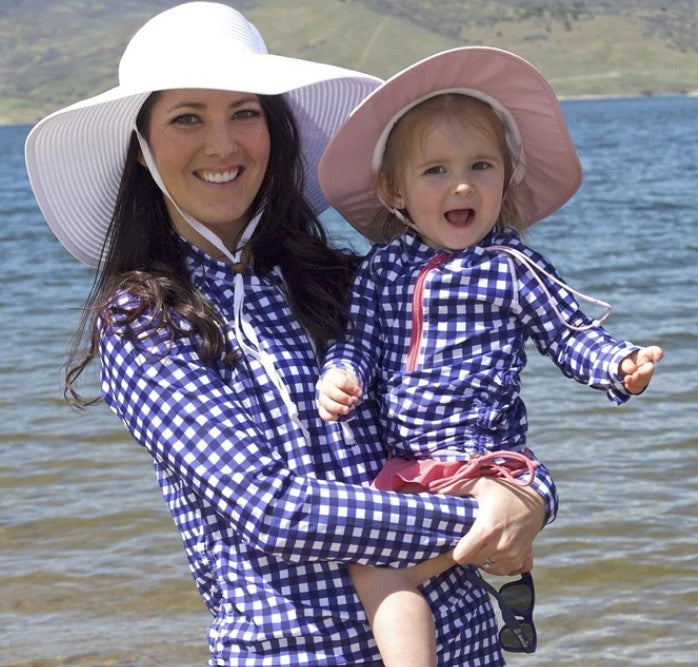
How to swim on your period without a tampon
While many women swim with tampons, others prefer to avoid them. We’ll show you some tampon alternatives to keep your cycle under control while swimming.
Quick links:
What is the best alternative to tampons?
How to choose the right products
How long can you swim without a tampon?
Why should you avoid tampons for swimming?
Some women prefer not to use tampons in the water for any of the following reasons:
- Discomfort. For some women, the action of swimming causes discomfort and chafing when wearing a tampon.
- Risk of leaks. Heavy menstrual flow can bypass the tampon and create an embarrassing bloody trail in the pool or ocean.
- Changing issue. It can be challenging to change a tampon discreetly in a public restroom at a swimming facility. Removing a wet, expanded tampon can be messy and uncomfortable.
- TSS. Perhaps the biggest reason to skip tampons for swimming is to reduce the risk of contracting toxic shock syndrome (TSS). This rare but serious bacterial infection is associated with leaving a tampon in for too long, as the warm, moist environment is ideal for bacteria growth on the tampon material.
If you avoid tampons for these reasons—or any other reason—let’s explore some alternative menstrual products.
Tampon alternatives for swimming
If tampons aren’t your thing in the water, here are the most popular alternatives:
- Menstrual cups
- Pads
- Menstrual discs
- Leak-proof swimwear
- Nothing
Menstrual cup
Reusable menstrual cups collect (rather than absorb) period blood. Made from medical-grade silicone, rubber, or thermoplastic elastomer (TPE), they are inserted into the vagina to catch and contain the menstrual flow.
Look for cups designed for swimming with a firm, wide rim to prevent spilling or movement. Practice insertion at home first and read all the cleaning requirements. Empty it every 2-4 hours.
Menstrual cups can hold more menstrual fluid than most tampons, making them a good option for heavy period flow or extended water activities.
Period pads
If you prefer using pads during your regular cycle, reusable cloth pads with an absorbent liner can contain blood flow while swimming. Look for pads that can securely adhere to the inner crotch of swimwear like bikini bottoms or swim shorts to prevent shifting and leaks. Our high-waisted swimsuit bottoms work well for this.
Change your reusable pad every 2-3 hours as you normally would to avoid overflow and stay fresh. Use cleansing wipes or rinse with fresh water after swimming to keep the area clean and dry.
While regular pads may move around or leak if worn swimming, period swimwear makes pads a viable option when positioned correctly and worn with supportive bottoms.
Menstrual discs
Menstrual discs are a reusable and convenient option for managing your period flow while enjoying water activities. Discs provide a comfortable and leak-free experience, even during the most active swimming sessions.
The smooth, flexible disc is inserted into the vagina to sit around the cervix and collect menstrual blood before it exits the body.
Discs adapt to the shape of your vagina and conform securely even during the twisting and bending motions of swimming. This prevents leaks or spillage of bodily fluids. The reservoir holds up to 3 times more menstrual fluid than menstrual cups.
Look for discs made from medical-grade silicone or plastic to ensure safety. Make sure to choose the correct size for your body.
To maintain hygiene and prevent any risk of vaginal infection, empty your menstrual disc every 12 hours. The process is simple and mess-free, even in public restrooms. Simply loop your finger under the pull tab to remove the disc, empty the collected menstrual blood, rinse the disc, and reinsert it for continued protection.
With menstrual discs, you can enjoy swimming during your menstrual cycle without worrying about leaks or discomfort.
Leak-proof swimwear
If you are not into internal options such as a tampon or cup, there are now leak-proof swimsuits and swim bottoms that require an accompanying pad.
Period swimwear has a hidden-layer liner or absorbent gusset sewn into the crotch to catch any menstrual blood or leaks from your pad. This saves you from needing to wear an extra pair of tight shorts underneath.
Look for period-proof swimwear made with multiple layers of absorbent, moisture-wicking, and waterproof materials to provide maximum protection during your time in the swimming pool or at the beach.
Nothing
Some women choose the “nothing” option for swimming on their period. No tampon, no disc, no…anything. This isn’t super viable for pools, but it works fine for the ocean—so long as your flow isn’t too heavy.

How to choose the right menstrual product
With the right menstrual product, you can enjoy the water with confidence and comfort. To ensure a leak-free and stress-free experience, keep these factors in mind:
- Absorbency level. Get a product that can handle your volume of flow.
- Comfort and fit. Ensure the product doesn't feel bulky, move around, or chafe when swimming.
- Leak protection. Pick an internal option or suit up with a leak-proof liner to contain the flow.
- Easy cleaning. Determine if the product can be cleaned hygienically before and after swimming.
- Discreet carrying. Does the product's portability allow for subtle and convenient changes as needed?
- Water interaction. Choose a product that is meant to be used while immersed in water. Make sure it is suited to withstand the water pressure without issue.
How long can you swim without a tampon?
When swimming without a tampon, listen to your body and understand the product that you’re using.
Menstrual discs and cups protect for up to 12 hours, so you can swim for longer periods without leaks. The specific duration depends on your flow and the product's capacity.
Period swimwear offers different absorbency levels, which affect how long you can wear them before changing. High-absorbency options give you longer protection, even on heavier flow days, while lighter absorbency swimwear may need more frequent changes.
Focus on finding a menstrual product that makes you feel confident and comfortable in the water, and take breaks to change when necessary. With the right approach, you can enjoy swimming on your period without relying on tampons.
How to swim on your period with a tampon
The majority of women use tampons for period control while swimming. They’re discreet, easy to use, and inexpensive. Here are some tips for swimming with a tampon:
- Choose a tampon with the appropriate absorbency level for your flow. If you have a heavy flow, opt for a higher absorbency tampon to prevent leaks and ensure comfort in the water.
- Change your tampon every 4-8 hours, or more frequently if needed, to maintain hygiene and avoid the risk of infections.
- If you experience painful period cramps or menstrual pain, gentle swimming can help alleviate discomfort. The weightlessness and low-impact nature of water activities can provide relief from menstrual cramps and promote relaxation.
- For a worry-free swimming experience, pair your tampon with a period swimsuit or a leak-proof swimsuit for added protection. This extra layer of security can give you peace of mind, especially if you have a heavy flow or plan to spend extended periods in the water.
- After swimming, insert a fresh tampon and properly dispose of used tampons in a trash bin. Avoid flushing them down the toilet, as this can clog the plumbing and pollute the environment.
Do tampons absorb water while swimming?
Tampons do not absorb water while you swim. They have an outer layer treated to repel and prevent absorption of water and liquids from outside the body. Their construction allows them to safely contain menstrual fluid from within the vagina without taking in surrounding water when submerged during activities like swimming.
So if you choose to use tampons as your period protection for swimming, you don't have to worry about the tampon itself filling up and expanding from absorbed pool or ocean water. The risk comes more from the potential for water pressure to dislodge the tampon and cause leakage, rather than external fluid absorption.
Choose SwimZip swimwear for comfort
SwimZip offers swimwear with active comfort in mind. Our durable, quick-drying fabrics and secure coverage make our women’s swim bottoms a great choice for swimming during your period.
Pair our stylish, functional, and affordable swimwear with your preferred hygiene products and supplements to stay dry and comfortable.
Our swimwear also protects you from dangerous UV exposure. We are also one of the most trusted UPF 50+ brands that people use to keep themselves and their loved ones safe from the sun.
We have something for every family member, including swim trunks for men, swimwear for women, sunsuits for kids, sun hats, rash guards, and accessories.

Period swimming FAQ
Can I go in the pool on my period without a tampon?
You can go swimming in the pool during your period with a menstrual cup, a period swimsuit with absorbent layers, or leak-proof period underwear.
What do competitive female swimmers wear during periods?
Many competitive swimmers use menstrual cups and tampons when participating in practices or events during their period. Period-friendly swimwear has also recently entered the market as an option.
What is the best menstrual cup for swimming?
For swimming, look for a firm, wide-rimmed menstrual cup made from medical-grade silicone. Reputable brands such as DivaCup, Lunette, and MeLuna offer cups that prevent leakage and stay in place even with water pressure and vigorous physical activity.
Will my period leak in the pool?
With the right period protection products, your menstrual flow is very unlikely to leak into the pool water.
Can I wear a pad in the pool?
You can wear a pad for period protection while swimming, but it needs to be a reusable cloth pad. Standard disposable pads will fall apart in water. Look for swimwear with built-in leak-proof layers to securely hold the reusable pad in place for extra protection.
How long can you swim with a pad?
Most reusable period pads can be worn for 2-4 hours while swimming before needing to be changed, depending on your flow. Higher absorbency pads allow longer wear. Take breaks as needed to change pads and avoid leaks or pad movement from waterlogged saturation.
Do period pads work in water?
Regular disposable period pads will disintegrate and fall apart when immersed in water, so they do not work for swimming protection. Reusable cloth menstrual pads made of moisture-wicking fabrics can effectively contain flow while swimming when properly secured.
Will menstrual blood attract sharks?
There is no evidence of shark attacks caused by menstrual blood. This is an unfounded myth. Sharks are attracted to blood and bodily fluids in general, but consider very small menstrual volumes dispersed in vast ocean waters as insignificant non-food sources.
Can I wear regular swimwear for swimming on my period?
While you can wear any regular swimsuit during your menstrual period, it's advisable to pair it with dedicated period protection such as menstrual cups, discs, pads designed for swimwear, or leak-proof period bottoms/swimwear. This avoids staining and provides comfortable coverage.
What are the potential health risks of using tampons while swimming?
There are a few potential health risks to be aware of when using tampons for swimming. Tampons can increase the risks of yeast infections or bacterial vaginosis by introducing moisture and bacteria. They can also cause discomfort from chafing with water pressure. Perhaps the biggest concern is toxic shock syndrome from leaving a tampon in too long in the warm, moist pool environment that promotes bacterial growth.
Are tampons uncomfortable to wear while swimming?
Many people find tampons quite uncomfortable to wear while swimming. The water pressure can cause the tampon to shift position, leading to chafing and irritation. Tampons also raise the risk of leaks when swimming more than other period products for water activities.



Leave a comment
This site is protected by reCAPTCHA and the Google Privacy Policy and Terms of Service apply.